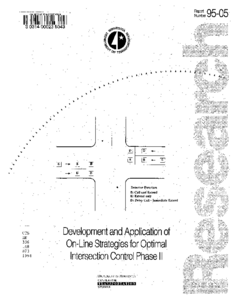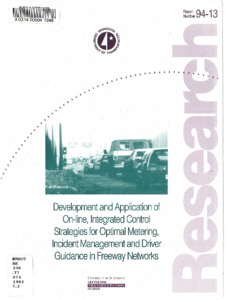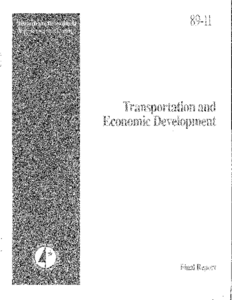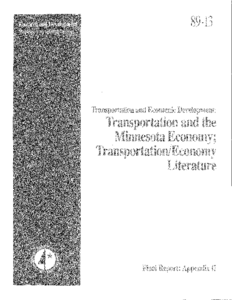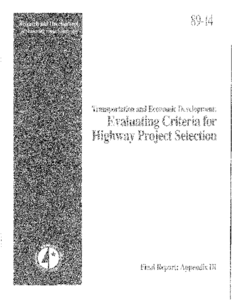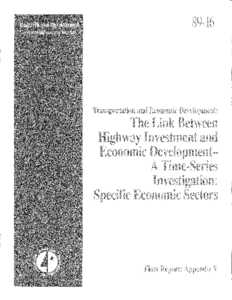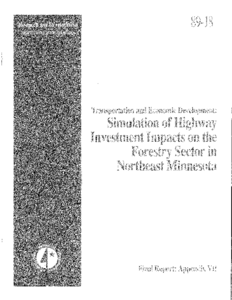Displaying results 1 - 10 of 13
Development and Application of On-Line Strategies for Optimal Intersection Control Phase II
Creator
Date Created
1994-10
Report Number
95-05
Description
Development and Application of On-Line, Integrated Control Strategies for Optimal Metering, Incident Management and Driver Guidance in Freeway Networks
Date Created
1993-04
Report Number
94-13
Description
Transportation and Economic Development: The Link Between Highway Investment and Economic Development - A Time-Series Investigation - Appendix IV
Creator
Date Created
1989-05
Report Number
89-15
Description
Transportation and Economic Development: The Link Between Highway Investment and Economic Development - A Time-Series Investigation: Specific Economic Sectors - Appendix V
Creator
Date Created
1989-05
Report Number
89-16
Description
Transportation and Economic Development: Heuristic Decision Framework For Upgrading Highway Weight Limits - Appendix VI
Date Created
1989-05
Report Number
89-17
Description
Transportation and Economic Development: Simulation of Highway Investment Impacts on the Forestry Sector in Northeast Minnesota - Appendix VII
Date Created
1989-05
Report Number
89-18
Description


